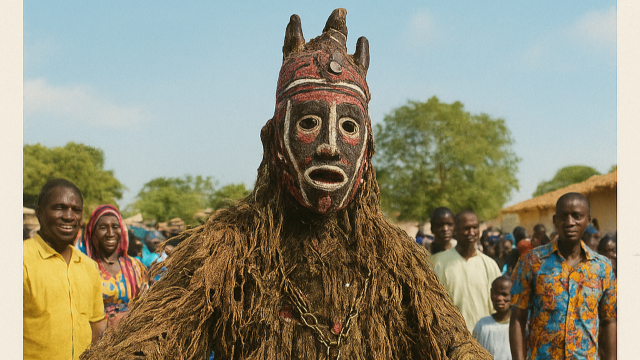Along the banks of the River Gambia and across the country’s bustling towns and villages, festivals serve as markers of time, memory, and identity. They are not merely occasions of celebration, but gatherings that illuminate the layers of tradition binding Gambian society. Each festival, whether religious, cultural, or historical, functions as a reminder of the nation’s enduring commitment to unity and heritage.
Among the most significant of these events is Tabaski, or Eid al-Adha. Observed by the Muslim majority, the festival begins with communal prayers before families gather to share meals that often center around the ritual sacrifice of a ram. The day carries a spirit of generosity; neighbors exchange food, and households open their doors to friends and strangers alike. More than a religious rite, Tabaski affirms bonds of kinship and compassion, values deeply embedded in Gambian social life.
Equally striking is the Kankurang Festival, rooted in Mandinka traditions. The masquerade, with its masked and costumed figures cloaked in bark and leaves, represents both spiritual protection and moral authority. Dancers move with rhythmic precision, invoking ancestral spirits while reinforcing codes of integrity and discipline. Today, the Kankurang is recognized by UNESCO as part of humanity’s intangible cultural heritage, underscoring its role in preserving identity across generations.
The country’s modern history is recalled each year on Independence Day, February 18. Streets fill with parades, music, and speeches that commemorate The Gambia’s liberation from colonial rule in 1965. For many, it is a day of both reflection and pride, celebrating the resilience of a nation that remains the smallest on mainland Africa yet commands a distinct place on the continent’s historical map.
Another key gathering, held biennially, is the International Roots Festival. Conceived in the 1990s, it highlights the links between The Gambia and the African diaspora, particularly in the Americas and the Caribbean. The program includes concerts, scholarly discussions, and pilgrimages to historic sites such as Kunta Kinteh Island, once a hub of the transatlantic slave trade. For participants, it is both commemoration and reunion—a recognition of painful histories, but also a celebration of shared resilience and cultural continuity.
Taken together, these festivals illustrate more than ritual or performance. They embody a collective narrative in which heritage, faith, and nationhood converge. Whether in the quiet generosity of Tabaski, the striking spectacle of the Kankurang, or the reflective ceremonies of the Roots Festival, The Gambia’s celebrations convey a spirit of togetherness that has endured across generations.


